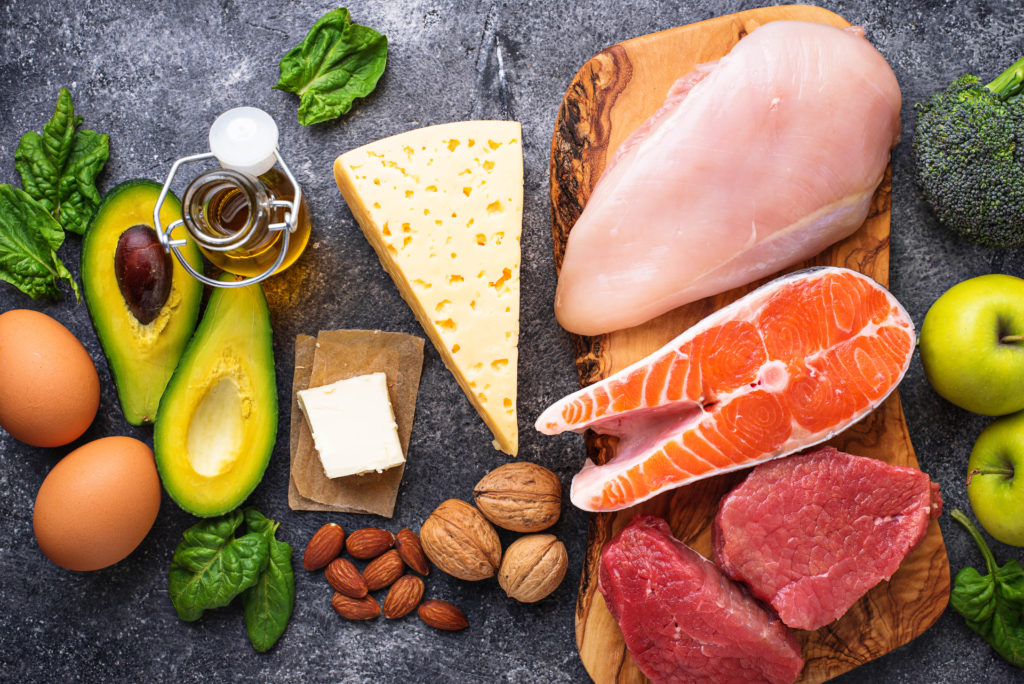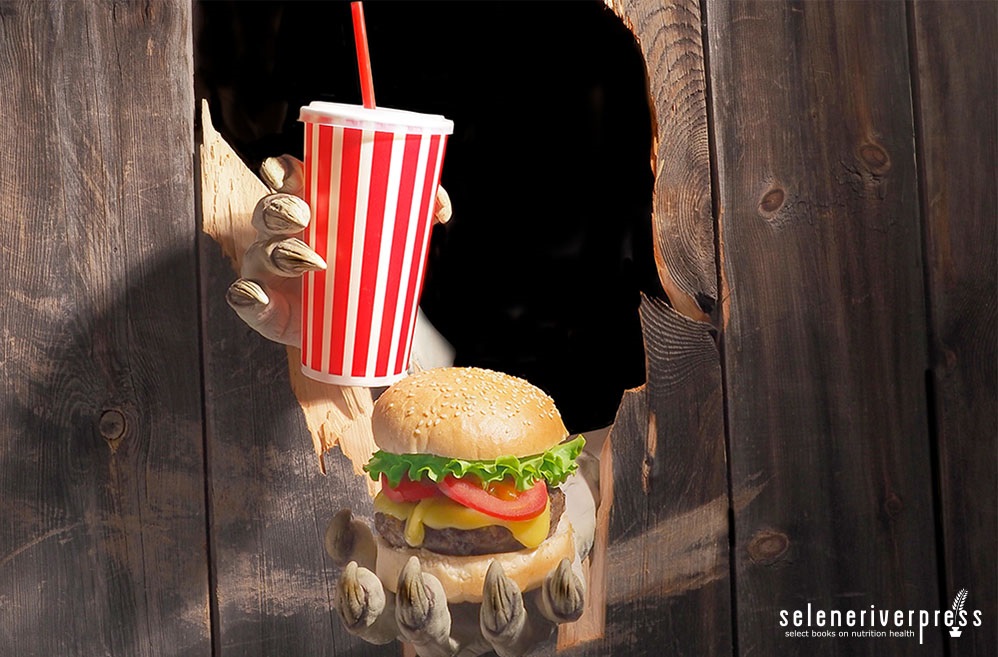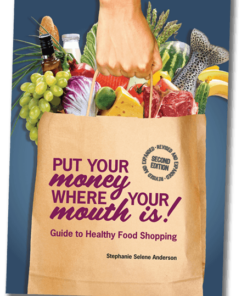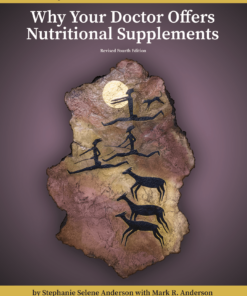Scene One: I work out, so I can eat whatever I want.
~~~
Humans are weird. We spend uncountable dollars and hours on clothes, makeup, and exercise. We worship buff athletes and their athletic contests. We adore skinny models and their skinny fashions. We think vegans are the healthy eaters. We’re hooked on image—on the appearance of health—while we fear weight gain, disease, and wrinkles.
Here’s a short scene from a true story:
A gal drives up to a gas station. Her fiancé jumps out of the passenger seat and heads to the convenience store. She rolls down the window and calls after him, “Get me a Coke, a Hershey’s bar, and a Ding Dong.”
Turning, he points to her and says, “I’m getting you a banana and a bottle of water.”
“But…I just worked out!” she whines.
Our young lady in the scene above sweated out some toxins from working out, but she has no plans to replace them with nutrients.
Think about it. You sweat toxins, burn up calories, and breakdown muscle tissue. Your body is hungry for nutrients to replenish, repair, and reenergize your tissues, organs, and systems. But can industrially grown meat cleanse and strengthen your body? What about vegetables grown on deficient soil and laden with toxic pesticides? Or convenient, prepackaged sandwiches and frozen dinners? Refined white bread or sugary desserts? No, no, no, and definitely no.
These are the foods of the zombie food apocalypse—dead foods that come back to kill you.
Before you’re too deep in the horde of zombie foods that there’s no saving you, wouldn’t it be smart to learn that health and beauty are not built on momentary wins? A good workout at the gym or the occasional green salad at lunch—unless they are part of a larger lifestyle centered around a nutrient-rich diet—will not help you. Not even your genes can save you. Health is built on your knowledge of food. And beauty is built on health. Beauty, strength, and endurance are preserved and restored by a lifestyle of healthy choices.
After you work out, your body needs:
- Pure, chemical-free water, for moving old toxins out and keeping new toxins (like chlorine or fluoride) from coming in.
- High-quality animal proteins, including organic pasture-raised eggs, poultry, beef, pork, lamb, yak, organ meats, unpasteurized dairy, and wild-caught fish, for rebuilding. (Did “yak” and “organ meats” catch your attention? They should. More on them later.)
- Cultured raw milk products and cultured vegetables, for great sources of lactic acid that feed intestinal flora, promoting good digestion and intestinal fortitude.
- Organic vegetables, for providing vitamins and minerals to the diet, plus fiber for cleansing.
That’s a beautiful variety of foods—and an abundance of good choices!
Given that we have all these choices, why would anyone eat white ciabatta bread or take prescription antidepressants without a second thought? Why would someone be happy to do a line of coke but balk at eating liver?
Maybe you will slowly need to introduce some of these foods over time, but your body will thank you for it. They provide what most industrial, refined foods lack: critical vitamin complexes, minerals, and amino acids. They don’t take life, they give life.
What follows from eating junk food and fast food made from refined and processed ingredients is only common sense. Foods that are devoid of whole nutrient complexes will kill you, not feed you. So get familiar with the foods of the Zombie Food Apocalypse. And get them out of your diet.
Foods of the Zombie Food Apocalypse: A Sampling
White sugar. There is no nutrition in white sugar, the refined product of sugar cane or sugar beets. The refinement process leaves behind nothing but a simple sugar called sucrose, which has the ability to rob you of health in a myriad of ways. Because this simple powder has destroyed the health of people from every corner of civilization to every haven of indigenous life, you might say it is the founding curse of the Zombie Food Apocalypse.
Hydrogenated oil. Your liver cannot convert this refined, denatured oil to the correct forms of fat that your skin and heart (to name just two important organs), need.
White flour. Not as innocuous as you might think, this zombie food hides in plain sight. After the refinement process removes the wheat germ (making the flour “white”), nothing remains but starch. That lost wheat germ is full of protein, B vitamins, and fat-soluble vitamin E complex. See how well your heart works without vitamin E complex—not to mention your hormones. It’s not a pretty sight.
Milk. Pasteurized milk is deader than your average zombie. Clean, raw milk from grass-fed cows has been a staple in the diet of indigenous people for centuries the world over. Yet all of a sudden, the dairy lobby is afraid we’ll die from drinking it. Learn about this living food and form your own opinion.
*************
Here’s a new scene:
A gal drives up to a gas station. Her fiancé jumps out of the passenger seat and heads to the convenience store. She rolls down the window and calls to him, “Get me a Coke, a Hershey’s bar, and a Ding Dong.”
Turning, he points to her and says, “I’m cooking you a steak-and-salad dinner.”
That’s the best response. Because a dinner of steak and salad provides nutrients that support life and life functions, which is the only reason to eat anything. And because everyone should have a friend to help keep them on track.
Refined sugar, hydrogenated oil, bleached white flour, and pasteurized dairy do not feed the needs of a hungry body. No amount of exercise can counteract the disruption caused by these dead foods.
You may never reach your version of perfection. But when it comes to your health, you can start with simple steps, and pretty soon you’ll be doing better than you’re doing now. You can look good without being perfect. But you cannot feel well without being well-fed.
*************
We’re living in an apocalypse of zombie foods, but you can save yourself! Learn all about it at Selene River Press—we’ve got the weapons you’ll need to fight in the food wasteland.
Sugar Blues by William Dufty. The story behind the darkest nutritional curse of modern times—refined sugar.
Put Your Money Where Your Mouth Is! Guide to Health Food Shopping (Revised and Expanded 2nd Ed.) by Stephanie S. Anderson. Ditch the fads and get to the fundamentals. Start your journey to better health through superior nutrition in the pages of this deceptively slim guide to healthy food shopping. You’ll learn why Dr. Michael Gaeta calls it “the real deal for real food.”
Nutrition and Physical Degeneration by Weston A. Price, DDS. In the 1930s, Dr. Weston Price crisscrossed the globe to study the diets of traditional societies. He found the same thing in every population: Those who stuck to traditional, whole-food diets were healthy, vibrant, and virtually free of degenerative disease. Those who’d made the switch to processed foods soon developed the same degenerative illnesses that plague us today.
Why Your Doctor Offers Nutritional Supplements by Stephanie S. Anderson and Mark R. Anderson. While many people know that processing food destroys vital nutrients, few realize that the synthetic “vitamins” added back to processed foods (and also found in most supplement bottles) are nothing like vitamins as they exist in whole foods. This simple but profound fact is the foundation of this brilliant guide to nutrition and health.
“Eat Crap and Die! A Test of Eating Skills for Ages 15–21” by Stephanie S. Anderson. Whether you see yourself as smart or dumb, as gorgeous or hideous, as confident or meek, there’s one skill that, if you master it, will truly show you just how smart, successful, sexy, and sure of yourself you can be. It’s something we were born to do, and we do it every day. If you guessed eating, you guessed right. This free article from SRP is a must-read.
Trophia: Simple Steps to Everyday Self-Health. Featuring the work of Paula Widish, the inaugural issue of this information-packed magazine showcases plenty of simple, action-oriented steps you can take on the path to a healthy diet and lifestyle.
Images from iStock/Arseniy45 (main), BartekSzewczyk (couple cooking), Claire Tuner (cupcakes), yulka3ice (food).
Co-Authors:
Sean Anderson
Sean Anderson is a Business Analyst at Onica, the top all-in Amazon Web Services consulting firm in the world. Based in Santa Monica, California, he is passionate about health, fitness, and technology. In his free time, he can be found boxing, searching for great food, or occasionally lounging at the beach.






